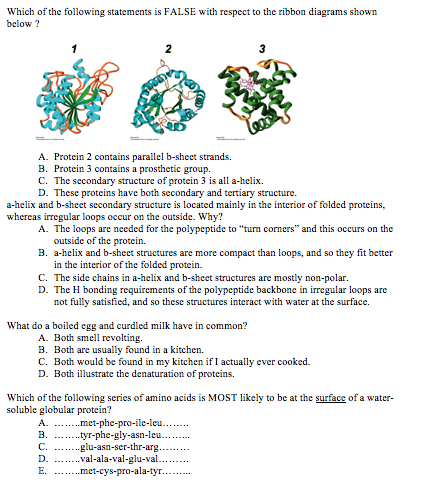MBB 222 Lecture Notes - Lecture 10: Protein Tertiary Structure, Transmissible Spongiform Encephalopathy, Prnp
Document Summary
Lecture 10 part 4: proteins - tertiary structure and folding. Prion diseases are self- infectious: mis-folded version of the prion protein, prp*, can induce the normal prp protein to misfold into a - strand-based structure, resulting in damaging aggregation via formation of cross- filaments. Specific protein aggregation amyloid fibers: often the cause of disease. Amyloid: extremely insoluble fibrils that polymerize from naturally soluble protein and which are deposited in cells and tissues. Many globular proteins consist of several compact, locally folded and stable regions called domains. Domains are often associated with a particular function. Domains tend to have ~40 to 200-350 amino acids. Fewer than 40 amino acids difficult to fold stably. More than 300 difficult to fold correctly. A single domain is typically made of a single stretch of primary sequence the interior consists almost entirely of non-polar residues. Both polar and non-polar residues on the outside. A simple quaternary structure: a dimer of identical subunits (homodimer)


